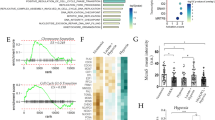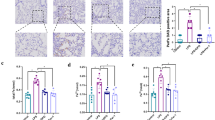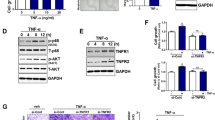Abstract
TNF-related apoptosis-inducing ligand (TRAIL, Apo2L) is a promising anticancer agent with high specificity for cancer cells. Many strategies have been proposed to enhance the sensitivity of cancer cells to TRAIL-mediated apoptosis, including the use of combination treatment with conventional cancer therapies. However, few reports have evaluated the effects of TRAIL in combination with mechanical stress, which can also cause apoptosis of cancer cells. In the present study, we describe a custom-designed culture system that delivers two atmospheres of elevated pressure (EP) by using compressed air, and which enhances the sensitivity of cancer cells to TRAIL-mediated apoptosis. The combination of TRAIL and EP significantly increased apoptosis of human H460 lung cancer cells more than hyperbaric normoxia or normobaric mild hyperoxia. EP-potentiating TRAIL-mediated apoptosis of H460 cells was accompanied by up-regulated death receptor 5 (DR5), activation of caspases, decreased mitochondrial membrane potential, and reactive oxygen species production. We also observed EP-induced sensitization of TRAIL-mediated apoptosis in other cancer cell types. In contrast, human normal cells showed no DNA damage or cell death when exposed to the combined treatment. In a chicken chorioallantoic membrane model, EP enhanced TRAIL-mediated apoptosis of tumors that developed from transplanted H460 cells. Collectively, EP enhanced TRAIL-induced apoptosis of human lung carcinoma cells in vitro and in vivo. These findings suggest that EP is a mechanical and physiological stimulus that might have utility as a sensitizing tool for cancer therapy.






Similar content being viewed by others
References
Ferreira CG, Epping M, Kruyt FA, Giaccone G (2002) Apoptosis: target of cancer therapy. Clin Cancer Res 8:2024–2034
French LE, Tschopp J (1999) The TRAIL to selective tumor death. Nat Med 5:146–147
Kischkel FC, Lawrence DA, Chuntharapai A, Schow P, Kim KJ, Ashkenazi A (2000) Apo2L/TRAIL-dependent recruitment of endogenous FADD and caspase-8 to death receptors 4 and 5. Immunity 12:611–620
Srivastava RK (2001) TRAIL/Apo-2L: mechanisms and clinical applications in cancer. Neoplasia 3:535–546
Johnstone RW, Frew AJ, Smyth MJ (2008) The TRAIL apoptotic pathway in cancer onset, progression and therapy. Nat Rev Cancer 8:782–798
Hajji N, Wallenborg K, Vlachos P, Nyman U, Hermanson O, Joseph B (2007) Combinatorial action of the HDAC inhibitor trichostatin A and etoposide induces caspase-mediated AIF-dependent apoptotic cell death in non-small cell lung carcinoma cells. Oncogene 27:3134–3144
Persaud SD, Mireles JR, Basu A (2009) Proteolytic Cleavage of p70 Ribosomal S6 Kinase by Caspase-3 during DNA damage-induced apoptosis. Biochemistry 48:1474–1480
Voortman J, Resende TP, Abou El Hassan MAI, Giaccone G, Kruyt FAE (2007) TRAIL therapy in non small cell lung cancer cells: sensitization to death receptor-mediated apoptosis by proteasome inhibitor bortezomib. Mol Cancer Ther 6:2103–2112
Luster TA, Carrell JA, McCormick K, Sun D, Humphreys R (2009) Mapatumumab and lexatumumab induce apoptosis in TRAIL-R1 and TRAIL-R2 antibody-resistant NSCLC cell lines when treated in combination with bortezomib. Mol Cancer Ther 8:292–302
Ozoren N, Kim K, Burns TF, Dicker DT, Moscioni AD, El-Deiry WS (2000) The Caspase 9 inhibitor Z-LEHD-FMK protects human liver cells while permitting death of cancer cells exposed to tumor necrosis factor-related apoptosis-inducing ligand. Cancer Res 60:6259–6265
Wilson TR, Redmond KM, McLaughlin KM, Crawford N, Gately K, O’Byrne K, Le-Clorrenec C, Holohan C, Fennell DA, Johnston PG, Longley DB (2009) Procaspase 8 overexpression in non-small-cell lung cancer promotes apoptosis induced by FLIP silencing. Cell Death Differ 16:1352–1361
Ashkenazi A, Pai RC, Fong S, Leung S, Lawrence DA, Marsters SA, Blackie C, Chang L, McMurtrey AE, Hebert A, DeForge L, Koumenis IL, Lewis D, Harris L, Bussiere J, Koeppen H, Shahrokh Z, Schwall RH (1999) Safety and antitumor activity of recombinant soluble Apo2 ligand. J Clin Invest 104:155–162
Walczak H, Miller RE, Ariail K, Gliniak B, Griffith TS, Kubin M, Chin W, Jones J, Woodward A, Le T, Smith C, Smolak P, Goodwin RG, Rauch CT, Schuh JC, Lynch DH (1999) Tumoricidal activity of tumor necrosis factor-related apoptosis-inducing ligand in vivo. Nat Med 5:157–163
Lawrence D, Shahrokh Z, Marsters S, Achilles K, Shih D, Mounho B, Hillan K, Totpal K, DeForge L, Schow P, Hooley J, Sherwood S, Pai R, Leung S, Khan L, Gliniak B, Bussiere J, Smith CA, Strom SS, Kelley S, Fox JA, Thomas D, Ashkenazi A (2001) Differential hepatocyte toxicity of recombinant Apo2L/TRAIL versions. Nat Med 7:383–385
Elrod HA, Sun SY (2008) Modulation of death receptors by cancer therapeutic agents. Cancer Biol Ther 7:163–173
Chen JJ, Chou CW, Chang YF, Chen CC (2008) Proteasome inhibitors enhance TRAIL-induced apoptosis through the intronic regulation of DR5: involvement of NF-kappa B and reactive oxygen species-mediated p53 activation. J Immunol 180:8030–8039
Yodkeeree S, Sung B, Limtrakul P, Aggarwal BB (2009) Zerumbone enhances TRAIL-induced apoptosis through the induction of death receptors in human colon cancer cells: evidence for an essential role of reactive oxygen species. Cancer Res 69:6581–6589
Daruwalla J, Christophi C (2006) Hyperbaric oxygen therapy for malignancy: a review. World J Surg 30:2112–2131
Bennett M, Feldmeier J, Smee R, Milross C (2008) Hyperbaric oxygenation for tumour sensitisation to radiotherapy: a systematic review of randomised controlled trials. Cancer Treat Rev 34:577–591
Park WH, Han YW, Kim SH, Kim SZ (2007) An ROS generator, antimycin A, inhibits the growth of HeLa cells via apoptosis. J Cell Biochem 102:98–109
Henk JM, Kunkler PB, Smith CW (1977) Radiotherapy and hyperbaric oxygen in head and neck cancer. Final report of first controlled clinical trial. Lancet 2:101–103
McMillan T, Calhoun KH, Mader JT, Stiernberg CM, Rajaraman S (1989) The effect of hyperbaric oxygen therapy of oral mucosal carcinoma. Laryngoscope 99:241–244
Kumar B, Koul S, Khandrika L, Meacham RB, Koul HK (2008) Oxidative stress is inherent in prostate cancer cells and is required for aggressive phenotype. Cancer Res 68:1777–1785
Speit Gt, Dennog C, Radermacher P, Rothfuss A (2002) Genotoxicity of hyperbaric oxygen. Mutat Res/Rev Mutat Res 512:111–119
Rutkowski JM, Swartz MA (2007) A driving force for change: interstitial flow as a morphoregulator. Trends Cell Biol 17:44–50
Jain RK (2005) Normalization of tumor vasculature: an emerging concept in antiangiogenic therapy. Science 307:58–62
Healey C, Forgione P, Lounsbury KM, Corrow K, Osler T, Ricci MA, Stanley A (2003) A new in vitro model of venous hypertension: the effect of pressure on dermal fibroblasts. J Vasc Surg 38:1099–1105
Oh S, Lee E, Lee J, Lim Y, Kim J, Woo S (2008) Comparison of the effects of 40% oxygen and two atmospheric absolute air pressure conditions on stress-induced premature senescence of normal human diploid fibroblasts. Cell Stress Chaperones 13:447–458
Vande Berg JS, Rose MA, Haywood-Reid PL, Rudolph R, Payne WG, Robson MC (2005) Cultured pressure ulcer fibroblasts show replicative senescence with elevated production of plasmin, plasminogen activator inhibitor-1, and transforming growth factor-beta1. Wound Repair Regen 13:76–83
Stanley AC, Fernandez NN, Lounsbury KM, Corrow K, Osler T, Healey C, Forgione P, Shackford SR, Ricci MA (2005) Pressure-induced cellular senescence: a mechanism linking venous hypertension to venous ulcers. J Surg Res 124:112–117
von Zglinicki T, Saretzki G, Docke W, Lotze C (1995) Mild hyperoxia shortens telomeres and inhibits proliferation of fibroblasts: a model for senescence? Exp Cell Res 220:186–193
Ferreira CG, Span SW, Peters GJ, Kruyt FA, Giaccone G (2000) Chemotherapy triggers apoptosis in a caspase-8-dependent and mitochondria-controlled manner in the non-small cell lung cancer cell line NCI-H460. Cancer Res 60:7133–7141
Joseph B, Lewensohn R, Zhivotovsky B (2000) Role of apoptosis in the response of lung carcinomas to anti-cancer treatment. Ann N Y Acad Sci 926:204–216
Kunzi-Rapp K, Genze F, Kufer R, Reich E, Hautmann RE, Gschwend JE (2001) Chorioallantoic membrane assay: vascularized 3-dimensional cell culture system for human prostate cancer cells as an animal substitute model. J Urol 166:1502–1507
Chin WW, Heng PW, Olivo M (2007) Chlorin e6—polyvinylpyrrolidone mediated photosensitization is effective against human non-small cell lung carcinoma compared to small cell lung carcinoma xenografts. BMC Pharmacol 7:15
Krueger A, Baumann S, Krammer PH, Kirchhoff S (2001) FLICE-inhibitory proteins: regulators of death receptor-mediated apoptosis. Mol Cell Biol 21:8247–8254
Kim Y, Suh N, Sporn M, Reed JC (2002) An inducible pathway for degradation of FLIP protein sensitizes tumor cells to TRAIL-induced apoptosis. J Biol Chem 277:22320–22329
Chang L, Kamata H, Solinas G, Luo JL, Maeda S, Venuprasad K, Liu YC, Karin M (2006) The E3 ubiquitin ligase itch couples JNK activation to TNFalpha-induced cell death by inducing c-FLIP(L) turnover. Cell 124:601–613
Kauh J, Fan S, Xia M, Yue P, Yang L, Khuri FR, Sun SY (2010) c-FLIP degradation mediates sensitization of pancreatic cancer cells to TRAIL-induced apoptosis by the histone deacetylase inhibitor LBH589. PLoS One 5:e10376
Chowdhury F, Na S, Li D, Poh YC, Tanaka TS, Wang F, Wang N (2010) Material properties of the cell dictate stress-induced spreading and differentiation in embryonic stem cells. Nat Mater 9:82–88
Engler AJ, Sen S, Sweeney HL, Discher DE (2006) Matrix elasticity directs stem cell lineage specification. Cell 126:677–689
Cheng G, Tse J, Jain RK, Munn LL (2009) Micro-environmental mechanical stress controls tumor spheroid size and morphology by suppressing proliferation and inducing apoptosis in cancer cells. PLoS One 4:e4632
Stanley AC, Lounsbury KM, Corrow K, Callas PW, Zhar R, Howe AK, Ricci MA (2005) Pressure elevation slows the fibroblast response to wound healing. J Vasc Surg 42:546–551
Eken A, Aydin A, Sayal A, Ustundag A, Duydu Y, Dundar K (2005) The effects of hyperbaric oxygen treatment on oxidative stress and SCE frequencies in humans. Clin Biochem 38:1133–1137
Kwon D, Choi K, Choi C, Benveniste EN (2008) Hydrogen peroxide enhances TRAIL-induced cell death through up-regulation of DR5 in human astrocytic cells. Biochem Biophys Res Commun 372:870–874
Hunter AM, LaCasse EC, Korneluk RG (2007) The inhibitors of apoptosis (IAPs) as cancer targets. Apoptosis 12:1543–1568
Chawla-Sarkar M, Bae SI, Reu FJ, Jacobs BS, Lindner DJ, Borden EC (2004) Downregulation of Bcl-2, FLIP or IAPs (XIAP and survivin) by siRNAs sensitizes resistant melanoma cells to Apo2L/TRAIL-induced apoptosis. Cell Death Differ 11:915–923
Kumar S, Weaver VM (2009) Mechanics, malignancy, and metastasis: the force journey of a tumor cell. Cancer Metastasis Rev 28:113–127
Nicolson T (2005) Fishing for key players in mechanotransduction. Trends Neurosci 28:140–144
O’Neil RG, Heller S (2005) The mechanosensitive nature of TRPV channels. Pflugers Arch 451:193–203
Acknowledgments
This work (20090091416) was supported by a grant from the Basic Science Research Program of the National Research Foundation of Korea (NRF) funded by the Korea government (MEST).
Author information
Authors and Affiliations
Corresponding author
Rights and permissions
About this article
Cite this article
Oh, S., Kwon, D., Lee, H.J. et al. Role of elevated pressure in TRAIL-induced apoptosis in human lung carcinoma cells. Apoptosis 15, 1517–1528 (2010). https://doi.org/10.1007/s10495-010-0525-5
Published:
Issue Date:
DOI: https://doi.org/10.1007/s10495-010-0525-5




